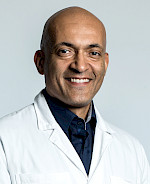
Plastic surgery
Plastic surgery aims to correct parts of the body which are abnormal when compared with standard anatomy.
Plastic surgery
Plastic surgery aims to correct parts of the body which are abnormal when compared with standard anatomy. Given that it can be carried out on the organs and tissue of any body structure, plastic surgery is a highly multidisciplinary specialty. This not only means that plastic surgeons work with many different specialists from other surgical domains (senology, traumatology, orthopaedics, general and vascular surgery, etc.) but also that there are many sub-specialties, including breast surgery, hand surgery, lower limb surgery, burn surgery, reconstructive surgery and aesthetic surgery (or cosmetic surgery, as it is often called).
Some of the most common plastic surgery procedures include operations targeted at combatting signs of ageing, removing tumours, scar removal and correcting malformations.
The most widespread techniques
- grafts: sections of tissue are taken from a certain part of the patient’s body. This part is called the “donor site” (for example, the abdomen). Once this tissue has been removed, it is then grafted to another area of the body, called the “recipient site” (for example, the thigh);
- free flap surgery: sections of tissue that stay connected to the donor site and are transferred to the recipient site; these sites must therefore be next to each other;
- implants: generally used to fill or correct congenital malformations present since birth (such as a cleft lip or breast or genital malformations) or otherwise sustained (in an accident, trauma, through illness, severe burns or previous surgical procedures). Breast prostheses are without a doubt the best-known kind of implant. However, prostheses made of similar materials are used in the calves, buttocks and cheekbones. External prostheses that replace part of an organ also exist, such as the ones used on the nose and ears, for example.
Reconstructive surgery
Of the aforementioned plastic surgery sub-specialties, reconstructive surgery aims to recover and restore the functions of the patient’s body parts. Breast reconstruction is a classic example of a reconstructive surgery procedure. In recent years, this operation has become an integral part of breast cancer treatment. Even if a full mastectomy must be carried out, there are surgical solutions that can help prevent women from feeling mutilated by this experience, as the reconstruction procedure allows the volume and shape of the breast to be restored.
Aesthetic surgery
In reconstructive surgery, improving the aesthetic appearance of the parts of the body the surgeon operates on is an important yet secondary aim. Conversely, in cosmetic surgery, improving the appearance and attractiveness of the face and body is the priority. The job of an aesthetic surgeon is to correct aesthetic faults of varying degrees that can impact the self-confidence or psychophysical well-being of the patient; this in turn has a significant influence on the quality of their interpersonal relationships. Some of the imperfections that aesthetic surgeons most commonly operate on are unwanted signs of ageing (mainly around the face). Face lifts are therefore one of the most widespread procedures, as well as breast augmentation or reduction, liposuction, rhinoplasty procedures (improving the aesthetic appearance of the nose) or otoplasty procedures (correction of ears which stick out or have other imperfections). The ultimate goal is to achieve or restore a harmony of forms that is aesthetically pleasing and as natural as possible.







